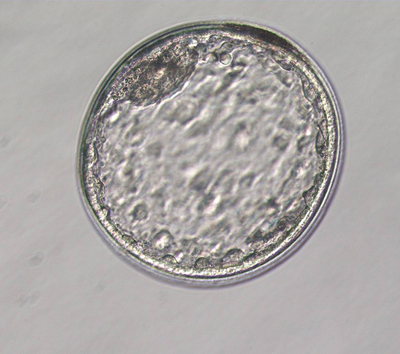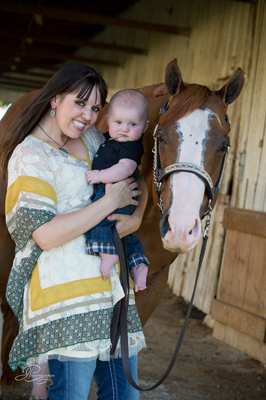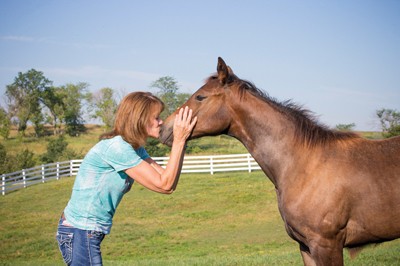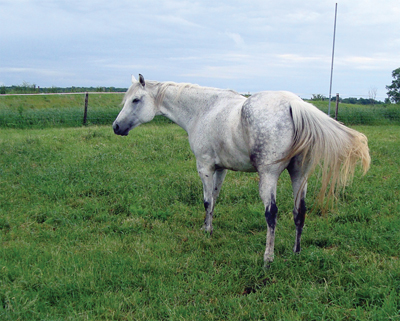 When the breed association registration rules began allowing for multiple foals out of one mare born in the same year, the practice of breeding using embryo transfers became more popular, allowing mares that are currently showing to also produce foals using recipient mares to carry the foals for them while they continue their show careers. This also allows mares to be bred at younger ages, not waiting for retirement from successful show careers, providing opportunity for her to produce more foals as well.
When the breed association registration rules began allowing for multiple foals out of one mare born in the same year, the practice of breeding using embryo transfers became more popular, allowing mares that are currently showing to also produce foals using recipient mares to carry the foals for them while they continue their show careers. This also allows mares to be bred at younger ages, not waiting for retirement from successful show careers, providing opportunity for her to produce more foals as well.
The embryo transfer and assisted reproduction services at Equine Medical Services in Columbia, Missouri, established in 1986, have become two of the largest and most successful programs in the country, with just over 400 pregnancies in 2014. Dr. Rob Foss says they experienced a significant downtrend in embryo transfers and breeding after 2008, but their business has rebounded back to actually exceed the numbers prior to 2008.
“There are increased health risks to a mare carrying a foal,” says Foss. “Predominately, they would be related to difficulties delivering a foal and pregnancy anomalies, such as abortions. But most broodmares can go through life producing healthy foals without problem.”
“We have mares come in for embryo transfer services more for the economic factors,” he adds. “It provides the opportunity to produce multiple foals, with perceived high value, while the mare is still working at a successful showing career.”
For some mares, Foss says, embryo transfer is their only way to successfully produce a foal, due to physical factors or issues.
“As a whole, we find mares who are currently showing make good donors because they are typically young and healthy,” Foss says.
For most young mares, the breeding and flushing process is relatively quick and routine. However, as in any medical procedure, there may be factors that work against that quick and routine practice.
“If a mare is stressed, or not cycling normally it can affect the breeding process. If she has inflammation in her uterus from breeding. Some mares respond negatively to the flushing procedure,” Foss explains. “Flushing can be irritating to the uterus, especially if it is done repeatedly. But when you look at it on a per pregnancy basis, it’s probably not that much of an issue.”
 According to Foss, the biggest reason that breeding/flushing/embryo transfers fail is probably insufficient quality of semen used.
According to Foss, the biggest reason that breeding/flushing/embryo transfers fail is probably insufficient quality of semen used.
Joetta Bell, Weatherford, Texas, followed this plan with her AQHA mare, Sweet Talkin Jeannie. She purchased the mare in 2003, with the plans to begin breeding her right away, along with showing her in Western Pleasure. Bell says Jeannie was a very easy show horse, not requiring a lot of time in the practice arena, so breeding her didn’t really interrupt a work schedule.
“Typically, we would start breeding her in February and she pretty much always gave us embryos right off the bat,” she explains. “Once I got the embryos, we would start showing her again. I always took her to the larger shows to get her qualified (for the World Show) as fast as we could. She was always an easy breeder so it didn’t change her show schedule all that much.”
Bell said the risks of pregnancy made the embryo transfer breeding a stronger option. The time required for a mare to carry a foal to term, combined with rebreed schedules, also gives the benefit to embryo transfers.
“We’ve tried to breed Jeannie to a variety of stallions,” continued Bell. “But certainly, when you’re flushing embryos and leasing recipient mares things get costly very fast.” Bell said they planned for no more than two foals out of Jeannie a year. With her impressive show record, there was no shortage of stallion owners wanting to breed her mare.
“A couple of times she would have two embryos in the same flush. Typically, if both embryos survive, you end up paying an additional stud fee and another recipient mare as well,” she says.
Jeannie produced her first three foals in 2006, the same year she was crowned the AQHA World Champion in Amateur Western Pleasure and Amateur Western Riding. One of those foals, My Ace Is Hot by Born To Be Blazing, is her most accomplished offspring, with multiple superior awards and an AQHA Performance Champion title to his credit. In 2007, Jeannie had four foals born to recipient mares by three different stallions.

Kaleena Weakley with Blondie and son, Jax
When you have a mare successful in the show pen, it’s easy to be excited about the promise of their foals. Kaleena Weakly, an AQHA competitor from Shelbyville, Illinois, chose to begin breeding her show mare, Hours Yours And Mine (aka Blondie), while continuing her show career in amateur all around events.
“I chose to start breeding Blondie while she is still a show horse because the whole process takes so long, and I wanted her offspring out there as soon as possible,” Weakley says. “Between getting your mare successfully bred and getting a healthy foal on the ground, to waiting two to three years before the foals can start their own show career in the riding arena, it’s all very time consuming. The turn around time for a riding prospect is a lot longer than say breeding a halter mare and being able to show that baby in weanling classes.”
Not knowing how long Blondie’s show career would be, and hoping/planning for a long career, they began breeding her using embryo transfers to start producing foals.
“Breeding mares really isn’t something my husband (Josh) and I ever thought we’d get into, this is definitely more of a sentimental thing for me,” Weakley admits.
First bred in 2013, Blondie had two successful embryos, with a filly sired by Lazy Loper and a colt by Hot Ones Only. They are expecting her third foal any day now, by Only In The Moonlite.
“This year, we are trying the roans out, Zippos Mr Good Bar and VS Code Red! I’m so excited!” said Weakley.
Sometimes economics and nature control the number of embryos that are flushed from a mare in a breeding season. “It does get expensive so fast,” agrees Weakly. “We try not to get too crazy with it and shoot for two embryos a year. The first year, we did try for three and got two viable embryos. Last year, we ran out of time and just got the one.”
A big consideration for the Weaklys in the breeding plans for Blondie was the management of recipient mares.
“We don’t have any extra mares just hanging out, so we have to lease the recipient mares,” she explains. “We don’t have a place to keep them, so they also have to be boarded out. Luckily, our longtime friend and horse trainer, Andy Staton, has a great place to handle all of my breeding needs and takes great care of Blondie, the recipient mares and the foals. He has a great reproductive vet that comes to his facility to aid in the process as well. It was most important for me to know Blondie was in good hands when I sent her off to be bred, and I knew I could trust Staton Show Horses to take the best care of her.”
This year, however, Weakley is changing it up a bit and taking her directly to Richland Ranch, where Zippos Mr Good Bar stands, which is only an hour from Weakley, much closer for visitation. The care and health of her beloved mare are definitely the most important factors for her.
“That’s why we chose Statons and Richland to do the breeding,” she says. “The first year, I tried to show her in between breedings during the month of March. It worked out fine, and definitely can be done. At this point in her show career though, we have chosen to give her the first few months of the year off to focus on breeding and then start showing afterwards, around May. She loved that schedule last year.”
Weakley says she believes she can can achieve a healthy balance between her show career and breeding her.
“Whatever we can accomplish, breeding-wise, between February through April is good for me. Then it’s back to show mode,” Weakly nods. “I don’t want to be greedy either. I’m thankful for whatever she gives me from here on out.”

Susan Knapp with a foal
Susan Knapp, of Van Meter, Iowa, has successfully combined showing mares with breeding them via embryo transfers as well. Looking for a Select Western Pleasure horse, Knapp purchased Cool Krymsun Lady (Annie) as a 3-year-old in 2008. She had won the AQHA World Championship in 2-Year-Old Western Pleasure with Oklahoma trainer Gil Galyean.
“Actually, (daughter) Sara, got along really well with the mare and started showing her after I purchased Radically Fired Up at the Congress,” Knapp recalls. “Sara and Annie won the Congress Non-Pro Western Pleasure Maturity Stakes in 2011.”
The first foal produced by Cool Krymsun Lady was bred by her previous owners before Knapps purchased her. Sired by RL Best Of Sudden, Suddenly A Cool Lady, was the Congress Master’s Champion and the AQHA Reserve World Champion 2-Year-Old Western Pleasure horse. The success of that first foal helped create demand for subsequent foals for Knapp.
Breeding Cool Krymsun Lady was a logical decision for Knapp.
“Actually, it was a business decision to help defray my showing expenses,” Knapp says. “The first year we bred her, we got really lucky and had four embryos. Two of those I sold as babies.” In 2013, she had two foals by VS Code Red. Kristen Galyean has purchased one of them.
Cool Krymsun Lady has produced ten foals so far. While Knapp has gotten multiple foals in a year using embryo transfers, she says she believes that the industry should welcome limits on the number of foals a mare can produce in a given year.
“I bred her, and I got four embryos that first year. But I would support limiting the numbers. I think it compromises the quality of our horses when they are mass produced,” she continues. “I know it’s profit driven in this business, but we really should consider it, for the sake of the breed. At least perhaps address it as a concern.”
For Knapp, when making the decision to breed her mares, the number one priority is the health and well being of her mares.
“Annie’s too valuable to risk her by having her carry her own foals, so I won’t let her have her own foals,” she explains. “And she likes her job as a show horse. She had some time off recovering from an injury and I really considered whether or not to return her to the show pen or retire her. With three World Champion and three Congress Champion titles, showing her is not making her any more valuable. But she seriously likes her job showing, she doesn’t care for pasture life, so Gil (Galyean) encouraged me to keep showing her.”
Since she only shows at the larger shows, finding the time in her schedule to breed Annie is easy.
“We just showed at the Sun Circuit and now she comes home to our farm in Iowa where we can put her under lights, and establish her ovulation schedule,”Knapp says. “We ship the semen in, breed her here at home and then I take her to Iowa State University to flush the embryos. By doing all of this locally, we are not compromising her health in any way, and I get to have her here.”
Knapp says she’s good with getting two embryos in a year. “I get approached by people looking to purchase an embryo or egg from her, and I will consider that once I’ve gotten my two,” she says. “Once we’re done breeding and flushing her, she goes back to Gil to continue showing, but since she’s not having to run up and down the road at a lot of shows, it’s easy for the breeding and showing to both happen.”
Radically Fired Up (Sue) has also been producing foals via embryo transfer for Knapp Farms, while continuing a successful show career.
“We actually just retired her after the World Show,” says Kanpp. “So she is living here at home as a broodmare now, raising foals with the help of recipient mares. She’s a big, stout mare and her babies are really nice.”
Her third foal, Fired Up Potential, was the Reserve Champion in the Congress Masters Western Pleasure in 2014.
“Last year, we sold a yearling filly out of her at the Tom Powers Sale who was one of the high sellers, so we’re excited to see her show as a 2-year-old this year,” Knapp says. “Annie has had more babies, so they’ve had more opportunities, but I really like Sue’s babies too.”
Knapp Farms has bred other mares while they are showing. “I’m very particular when it comes to the care of my horses,” Kanpp says. “I’m very hands-on with them all. I do have the mares foal out at our vet’s, but they come home in about three days.”
Knapp leases all of her recipient mares, saying it’s more expensive to own them than to lease. But she’s selective on the recipient mares she gets, making sure they are easy to handle with good manners and personalities to be the best environment for the foals they are raising.
“We breed our mares who have earned a good show record, and we use embryo transfers on all of them.”

Goodbars Glamourgirl
Tim and Barb Delf, of Blue Grass, Iowa, have used embryo transfers for breeding four mares. Two mares were older, in their late teens and would not reliably carry a foal to term.
One mare, AQHA Champion Double My Assets, had an early January foal, they flushed an embryo on foal heat from her and then bred her on the following cycle and she carried that foal.
The final one has been Goodbars Glamourgirl, number three on the Top 300 Leading AQHA Dams of Halter & Performance Points over five years 2009-2014 list.
Never shown, Goodbars Glamourgirl, carried five foals before Delfs began using embryo transfer on her.
“Once they started showing, we had a lot of demand for her foals,” explains Tim Delf.
Her first foal was Cool Assets, multiple AQHA World Champion.
“We started doing embryo transfer with her to increase production,” Delf says. “She is now 19 years old and has produced 22 foals, 17 by embryo transfer. Embryo transfer breeding is an economic plan.”



You must be logged in to post a comment Login